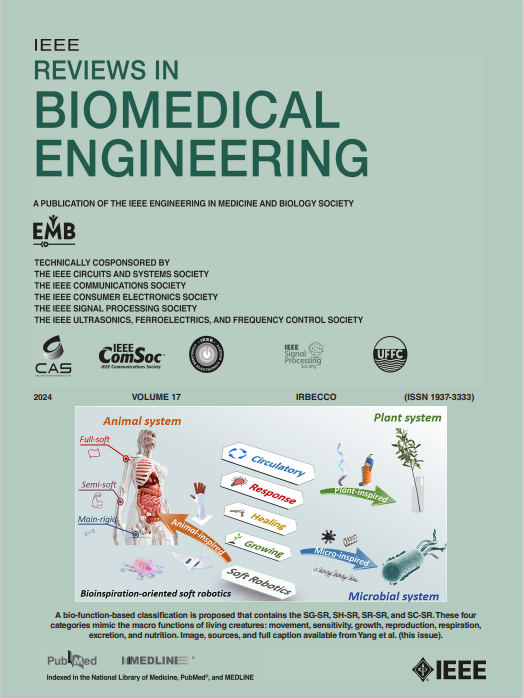特定患者动脉模型内的流体与结构相互作用:计算模拟与实验验证。
IF 17.2
1区 工程技术
Q1 ENGINEERING, BIOMEDICAL
引用次数: 2
摘要
心血管疾病(CVD)是全球死亡的主要原因,由于人口老龄化,其发病率正在上升。心血管疾病的发生和发展与不利的血管血液动力学和生物力学直接相关,其体内测量仍然具有挑战性,但可以通过数值和实验进行模拟。在特定心血管疾病患者病例中评估这些参数的能力对于更好地预测未来疾病进展、不良事件风险和治疗效果至关重要。虽然在患者特异性血液动力学模拟方面取得了重大进展,但血管通常被假定为刚性的,这并没有考虑到血管的顺应性机械特性,而血管的故障与疾病有关。为了模拟柔性血管的生物力学,流固耦合(FSI)模拟已成为描述特定患者心血管解剖结构中血液动力学特性的理想工具。由于 FSI 模拟结合了血液流体域和动脉结构域,因此对其实验验证提出了新的挑战。本文回顾了针对患者特异性动脉几何结构进行 FSI 模拟的相关科研工作,以及当前 FSI 模型验证的标准,包括使用顺应性动脉模型,这为 FSI 结果的实验验证提供了新的潜力。本文章由计算机程序翻译,如有差异,请以英文原文为准。
Fluid-Structure Interaction Within Models of Patient-Specific Arteries: Computational Simulations and Experimental Validations
Cardiovascular disease (CVD) is the leading cause of mortality worldwide and its incidence is rising due to an aging population. The development and progression of CVD is directly linked to adverse vascular hemodynamics and biomechanics, whose in-vivo measurement remains challenging but can be simulated numerically and experimentally. The ability to evaluate these parameters in patient-specific CVD cases is crucial to better predict future disease progression, risk of adverse events, and treatment efficacy. While significant progress has been made toward patient-specific hemodynamic simulations, blood vessels are often assumed to be rigid, which does not consider the compliant mechanical properties of vessels whose malfunction is implicated in disease. In an effort to simulate the biomechanics of flexible vessels, fluid-structure interaction (FSI) simulations have emerged as promising tools for the characterization of hemodynamics within patient-specific cardiovascular anatomies. Since FSI simulations combine the blood's fluid domain with the arterial structural domain, they pose novel challenges for their experimental validation. This paper reviews the scientific work related to FSI simulations for patient-specific arterial geometries and the current standard of FSI model validation including the use of compliant arterial phantoms, which offer novel potential for the experimental validation of FSI results.
求助全文
通过发布文献求助,成功后即可免费获取论文全文。
去求助
来源期刊

IEEE Reviews in Biomedical Engineering
Engineering-Biomedical Engineering
CiteScore
31.70
自引率
0.60%
发文量
93
期刊介绍:
IEEE Reviews in Biomedical Engineering (RBME) serves as a platform to review the state-of-the-art and trends in the interdisciplinary field of biomedical engineering, which encompasses engineering, life sciences, and medicine. The journal aims to consolidate research and reviews for members of all IEEE societies interested in biomedical engineering. Recognizing the demand for comprehensive reviews among authors of various IEEE journals, RBME addresses this need by receiving, reviewing, and publishing scholarly works under one umbrella. It covers a broad spectrum, from historical to modern developments in biomedical engineering and the integration of technologies from various IEEE societies into the life sciences and medicine.
 求助内容:
求助内容: 应助结果提醒方式:
应助结果提醒方式:


